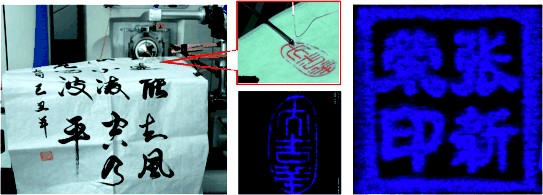A low-temperature plasma probe can identify art fraud without damaging the artwork, which is important should the work turn out to be genuine.
Many priceless works of art are very delicate, so restoration, conservation, dating and authentication require sophisticated technical methods that avoid interfering with the substance of the work. Now, Sichun Zhang and colleagues at Tsinghua University in Beijing, China, have developed a new mass spectrometric imaging technique that can characterise paintings and calligraphy by barely scratching the surface.
In conventional mass spectrometry a substance is vaporised and then ionised to produce electrically charged particles of different sizes depending on the chemical structure of the compound. The ions are accelerated by an electric field and spread out by a magnetic field to produce a spectrum as the magnetic field makes particles of different mass to charge ratio deviate more or less than each other. Imaging mass spectrometry involves scanning a surface and releasing ions directly from the surface using special ionization methods. Unfortunately, these techniques require vacuum conditions, which limits sample size so that previously a tiny cutting would need to be removed from an artwork for analysis.

The Chinese team has developed a low-temperature plasma probe, which consists of a fused capillary and two electrodes made of aluminium foil. High voltage alternating current applied to this probe induces a discharge in the capillary forming a low-temperature plasma; the probe reaches a mere 30 Celsius. However, in this state the helium plasma has energetic and excited enough to eject a few molecules from the surface of a sample and ionize them without measureable damage to a work of art.
The researchers used their approach to test seals, stamped signatures on Chinese paintings and calligraphy. They could reveal variations in ink composition easily, making it possible to differentiate between authentic and forged seals.
Links
Angew Chem Int Edn, 2010, online
Professor Dr. Xinrong ZHANG